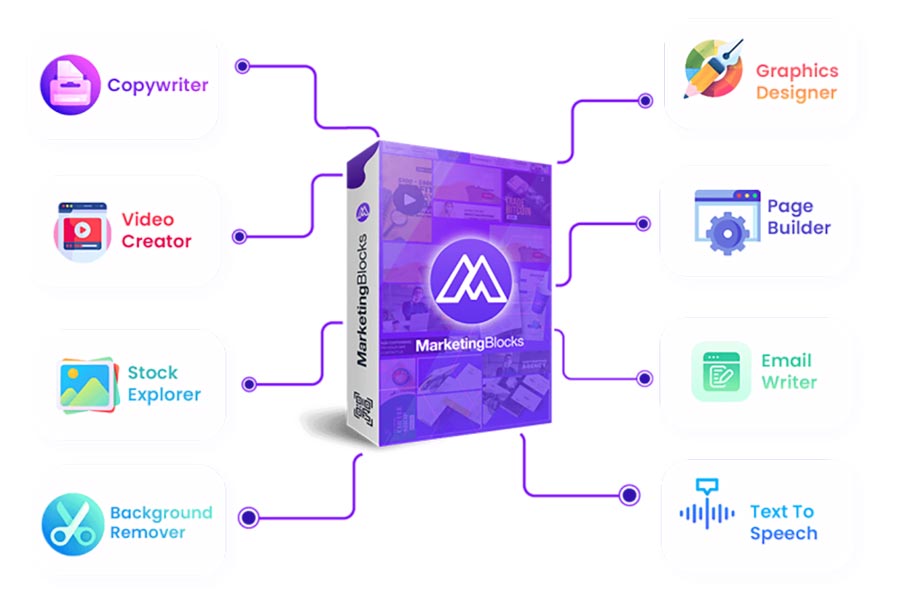Unveiling Interactive Video: Pros & Cons in Advertising

Interactive video advertising has gained significant traction in digital marketing in recent years. This innovative form of advertising enables brands to connect with their target audience more engagingly and interactively. However, like any other advertising technique, interactive video advertising has advantages and limitations. In this blog, we will explore both sides of the coin and delve into the critical aspects of this advertising medium.
Advantages of Interactive Video Advertising
Enhanced Engagement: One of the primary advantages of interactive video advertising is its ability to captivate and engage users. Traditional video ads are often viewed passively, whereas interactive videos encourage active participation. By allowing users to interact with the content, brands can create a more memorable and impactful advertising experience.
Users can click on hotspots, quizzes, or interactive games within the video, making the ad more interactive and engaging.
Active participation increases user involvement and a deeper connection with the brand.
Increased Brand Awareness: Interactive video advertising can boost brand awareness significantly. By incorporating elements such as clickable hotspots, quizzes, or interactive games within the video ad, brands can create a more immersive and memorable experience for viewers. This can result in a higher recall value and increased brand recognition.
Clickable hotspots allow viewers to explore specific aspects of the brand, such as product features or additional information.
Quizzes and interactive games within the video can create a fun and engaging experience, leaving a lasting impression on the viewers.
Improved User Experience: Interactive video ads allow users to control their viewing experience. They can choose which parts of the video to explore, click on interactive elements, and navigate through different storylines or product features. This level of control enhances the overall user experience and makes the ad more personalised.
Users can skip sections they are not interested in and focus on the content that resonates with them.
Interactive elements provide a sense of agency to the viewers, making them feel more involved in the ad.
Better Data Collection: Interactive video ads provide valuable data insights that can inform future marketing strategies. Brands can gather data on user interactions, such as clicks, time spent on different sections, and engagement rates. This data helps in understanding consumer preferences and optimising future advertising campaigns accordingly.
Click data can indicate which parts of the video ad appeal most to viewers, helping brands identify their target audience’s interests.
Time spent on different sections can reveal where viewers are most engaged, enabling brands to focus on those aspects.
Higher Conversion Rates: The interactive nature of these video ads can lead to higher conversion rates. By allowing users to make purchases, sign up for newsletters, or request more information directly within the video, brands can seamlessly guide users through the conversion funnel. This can result in improved lead generation and sales.
Interactive elements like clickable buttons or forms within the video ad allow viewers to take immediate action, reducing the friction between interest and conversion.
The convenience of making a purchase or signing up without leaving the video ad increases the likelihood of conversion.
Limitations of Interactive Video Advertising
Technical Requirements: Interactive video ads often require specific technical capabilities and software to deliver the intended interactive experience. This can limit the campaign’s reach, as not all devices or platforms may support the necessary features. Brands need to ensure compatibility across different devices and platforms to maximise the impact of their interactive video ads.
Brands must consider the technical capabilities of their target audience’s devices and choose interactive features supported across various platforms.
Compatibility testing ensures that the interactive elements function as expected on all devices.
Development and Production Costs: Creating interactive video ads typically involves additional resources and costs compared to traditional video ads. The development and production process may require specialised skills, software, and interactive designers and developers collaborations. Brands should consider these factors while planning their advertising budget.
Interactive video ads may require the expertise of interactive designers and developers, increasing production costs.
Specialised software and tools may be necessary to create the desired interactive experience, adding to the overall expenses.
User Engagement Challenges: While interactive video ads have the potential to enhance user engagement, there is no guarantee that all viewers will actively interact with the content. Some users may still prefer a passive viewing experience and may not be inclined to interact with the video ad. Brands must carefully balance the interactive elements to provide value without overwhelming the viewer.
Brands should ensure that the interactive elements are seamlessly integrated into the video ad, enhancing the overall experience without being intrusive.
Offering optional interactive features allows viewers to choose their level of engagement, accommodating both active and passive viewers.
Measurement and Analytics: Measuring the effectiveness of interactive video ads can be challenging. Traditional metrics like views and impressions may only partially represent audience engagement and campaign success. Brands need to leverage advanced analytics tools to accurately track user interactions, conversion rates, and overall campaign performance.
Advanced analytics tools can provide insights into user interactions, allowing brands to measure the effectiveness of different interactive elements.
Tracking conversion rates directly attributable to the interactive video ad can provide a more accurate measure of campaign success.
Creative Execution: Designing and executing interactive video ads requires carefully balancing creativity and functionality. Brands must ensure that the interactive elements seamlessly integrate with the video ad concept. Poorly executed interactive features may distract viewers or detract from the core message, leading to a less effective campaign.
Brands should create interactive elements that complement the video ad’s message and enhance storytelling.
User testing and feedback can help identify distractions or usability issues with the interactive elements.
Conclusion
Interactive video advertising offers several advantages and presents unique opportunities for brands to engage with their target audience. The benefits are evident from enhanced engagement and increased brand awareness to improved user experiences and better data collection. However, considering the limitations, including technical requirements, production costs, and potential user engagement challenges, is essential. By understanding both the advantages and limitations, brands can strategically incorporate interactive video advertising into their marketing efforts to drive impactful results and connect with their audience on a deeper level.
If you found this post engaging, don’t forget to explore our additional blogs below.
- Supercharge Your Business: Mastering Cross-Channel Marketing Magic!
- Influence: The Psychology of Persuasion by Robert B. Cialdini – A Word Marketing Book Summary
- Building Trust: Brand Awareness & Reputation
- Unlocking Success: Data-Driven Targeted Advertising
- The AI Revolution: Transforming Marketing & Advertising
- Introducing Our New and Improved Dewalist Marketplace Design
- Ad Ethics: Balancing Persuasion with Responsibility
- Email Showdown: Mandrill vs Mailchimp Features
- The Future of Digital Out-of-Home (DOOH) Advertising
- Revolutionising Marketing with Virtual & Augmented Reality
Sign up for updates on this blog and our latest posts if you enjoyed reading this one.
Help your friends and colleagues stay informed about the newest insights on business, marketing, finance, lifestyle, and society by sharing our blog content through Facebook, Twitter, Pinterest, LinkedIn, email, or WhatsApp links below. We can create a knowledge-sharing community and empower one another to accomplish and experience our objectives.
FAQ
What are the advantages of interactive video advertising?
Interactive video advertising enhances user engagement and creates a more impactful advertising experience.
It increases brand awareness and recognition through immersive and memorable experiences.
It improves the overall user experience by allowing viewers to control their viewing experience.
It provides valuable data insights for future marketing strategies and optimising advertising campaigns.
What are the limitations of interactive video advertising?
Interactive video ads require specific technical capabilities and software, limiting their reach.
Development and production costs are higher compared to traditional video ads.
Not all viewers may actively interact with the content, posing user engagement challenges.
Measuring the effectiveness of interactive video ads can be challenging, requiring advanced analytics tools.
Creative execution must carefully balance creativity and functionality to avoid distractions or detracting from the core message.
How can brands overcome the technical limitations of interactive video advertising?
Brands should consider the technical capabilities of their target audience’s devices and choose interactive features supported across various platforms.
Compatibility testing ensures interactive elements function as expected on all devices.
How can brands address potential user engagement challenges in interactive video advertising?
Brands should seamlessly integrate interactive elements into the video ad to enhance the overall experience without being intrusive.
Offering optional interactive features allows viewers to choose their level of engagement, accommodating both active and passive viewers.
Credits
Featured photo by Terje Sollie on Pexels.









